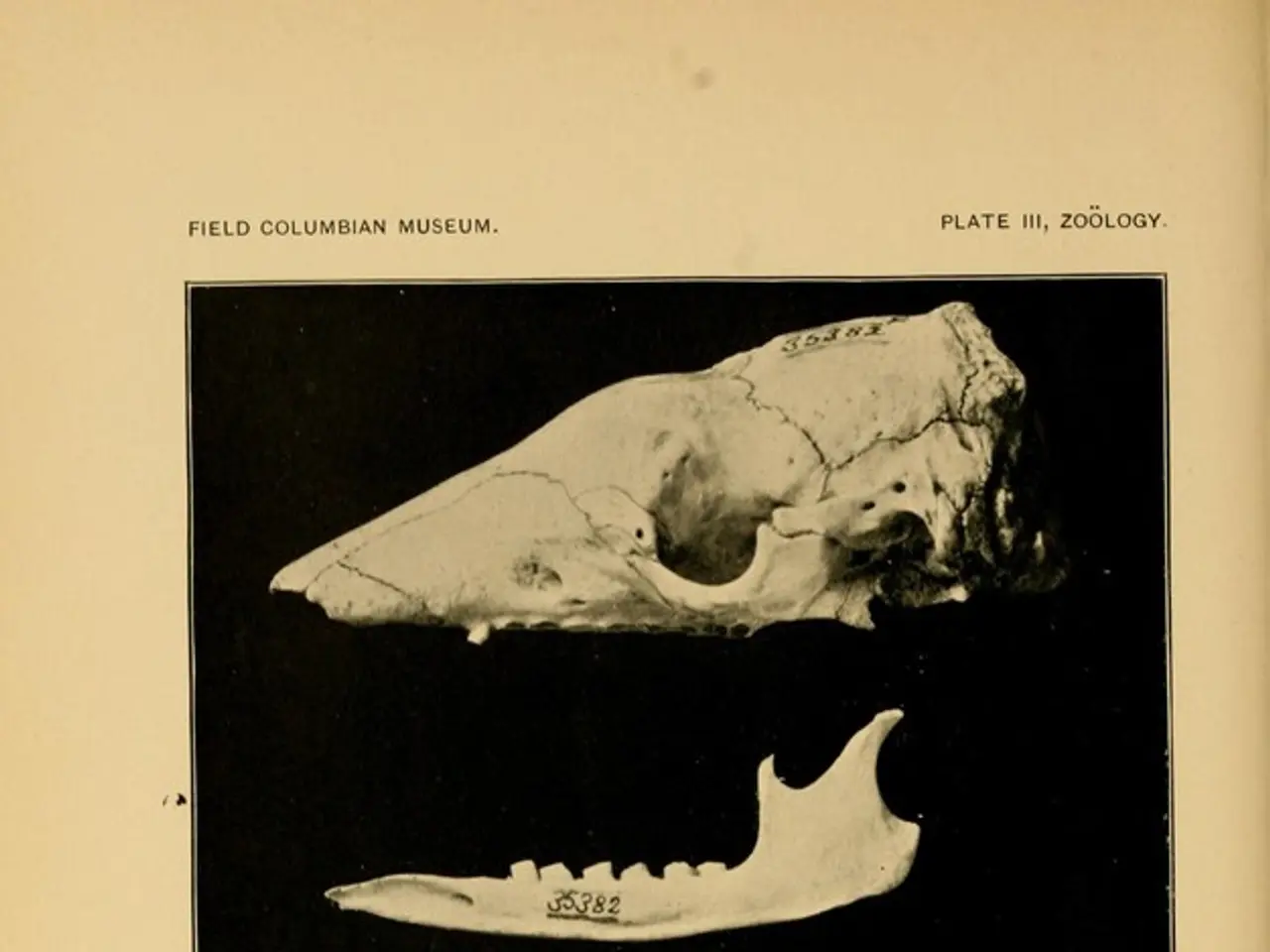Childhood Bone Cancer: Crucial Facts to Understand
In the realm of childhood cancers, two prominent types stand out – osteosarcoma and Ewing sarcoma. These primary bone cancers account for 5% of all childhood cancers, with osteosarcoma making up 56% and Ewing sarcoma accounting for 34%.
Symptoms
The typical symptoms of both cancers in children are primarily pain and swelling at the tumor site. Osteosarcoma often causes bone pain that can interfere with sleep, along with swelling and sometimes fractures due to weakened bone. Ewing sarcoma symptoms can be similar but may also include systemic signs such as fever, fatigue, and unexplained weight loss.
Diagnosis
Diagnosis of bone cancer involves a comprehensive evaluation, including physical examinations, imaging tests, blood tests, and biopsies. X-rays and CT scans help detect and assess bone lesions. MRI uses radio waves, a magnet, and a computer to visualize the tumor area, while PET scan involves the injection of radioactive sugar into the blood to reveal tumors.
The definitive diagnosis is made through biopsy and histopathology, where malignant bone or soft tissue cells are examined. Immunohistochemical markers like SATB2 help distinguish osteosarcoma from other tumors. Bone marrow biopsy and aspiration might also be conducted to examine the bone marrow for signs of cancer.
Treatment
Both cancers require early and accurate diagnosis to improve outcomes. Treatment options generally involve multimodal approaches.
Osteosarcoma treatment typically includes neoadjuvant chemotherapy followed by surgical resection of the tumor. The prognosis depends on factors such as tumor size, location, chemotherapy response, and metastasis presence.
Ewing sarcoma treatment usually combines chemotherapy, surgery, and/or radiotherapy due to its aggressive and frequent metastatic nature in children. The exact regimen depends on the tumor location and extent.
Prognosis
Approximately 60% of people with either osteosarcoma or Ewing sarcoma have long-term disease-free survival. However, delayed treatment may worsen the prognosis, as symptoms can mimic infections or trauma, necessitating a high suspicion and comprehensive evaluation.
[1] Bielack, S., et al. (2005). Prognostic factors in osteosarcoma: results of the European Osteosarcoma Intergroup. Journal of Clinical Oncology, 23(12), 2578-2586. [2] Krailo, M. D., et al. (2017). Early stage Ewing sarcoma family of tumors: a report from the Children's Oncology Group. Journal of Clinical Oncology, 35(1), 60-67. [3] Ladenstein, R. (2015). Diagnosis and treatment of bone and soft tissue sarcomas in children. Pediatric Clinics of North America, 62(3), 533-549. [4] van der Woude, C. J., et al. (2015). ESMO Clinical Practice Guidelines for the diagnosis, treatment and follow-up of primary bone sarcomas. Annals of Oncology, 26(suppl 5), v120-v128. [5] Whelan, T. J., et al. (2017). Osteosarcoma. Lancet, 389(10077), 1785-1796.
Read also:
- Proposal sought for a directive on shielding workers from potential ionizing radiation hazards, as per Commission's request.
- Eastwood's 90/10 principle for enduring success span
- The True Impact of Kratom, Often Referred to as 'Street Heroin,' on the Human Body Unveiled
- Under the autumn season, a prohibition on smoking for boys is enforced.




